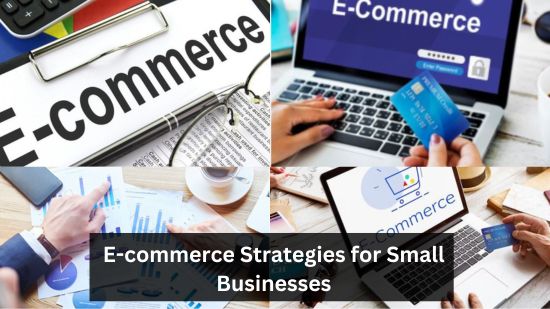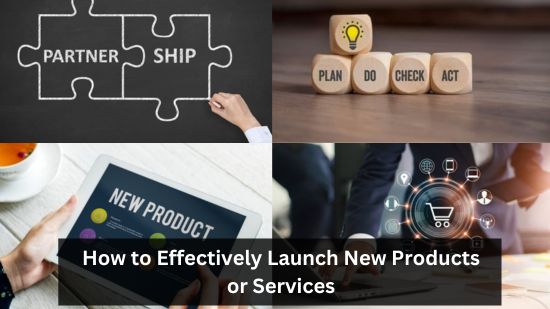
E-commerce Strategies for Small Businesses
“E-commerce Strategies for Small Businesses”
In today’s digital age, e-commerce has become a pivotal component for the success of small businesses. It provides a platform to reach a wider audience, operate 24/7, and offer convenience to customers. Understanding and implementing effective e-commerce strategies can help small businesses thrive in a competitive market. This article delves into a comprehensive plan to set up, manage, and grow an e-commerce business effectively.
Understanding E-commerce
E-commerce, short for electronic commerce, refers to buying and selling goods and services online. It encompasses various activities such as online shopping, electronic payments, online auctions, and internet banking. For small businesses, e-commerce offers an opportunity to compete with larger enterprises by providing an accessible and scalable platform for reaching customers.
Importance of E-commerce for Small Businesses
The significance of e-commerce for small businesses cannot be overstated. It allows companies to expand their reach beyond local boundaries, reduce operational costs, and offer personalized shopping experiences. Moreover, e-commerce provides valuable data insights to understand customer behavior, preferences, and trends, enabling businesses to make informed decisions and improve their offerings.

Credit: gyanmatrix.com
Setting Up an E-commerce Website
Choosing the Right Platform
Selecting the right e-commerce platform is crucial for the success of your online store. Popular platforms like Shopify, WooCommerce, and BigCommerce offer a range of features tailored for small businesses. When choosing a platform, consider factors such as ease of use, customization options, scalability, and cost.
Designing a User-Friendly Interface
To enhance the shopping experience, prioritize a user-friendly interface that simplifies navigation through clear categories and effective product filters. Streamline the checkout process to minimize friction and ensure a seamless transaction flow. By focusing on these elements, you can reduce bounce rates and enhance conversion rates, fostering a positive user interaction that encourages repeat visits and sales.
Mobile Optimization
Optimizing your e-commerce site for mobile devices is crucial due to the increasing number of mobile shoppers. A responsive design adapts your website’s layout and functionality seamlessly across smartphones and tablets, improving usability and encouraging higher engagement from mobile users. Ultimately, this enhancement can lead to increased conversion rates and sales for your online business.
Product Listings and Descriptions
Writing Compelling Descriptions
Effective product descriptions are crucial as they directly impact purchasing decisions by informing and enticing potential buyers. Crafting clear, concise, and engaging descriptions that emphasize product benefits and features helps customers understand what they’re getting. Utilizing bullet points and relevant keywords not only enhances readability but also improves search engine optimization (SEO), making your products more discoverable online.
High-Quality Images and Videos
Visual content is pivotal for online shopping as it enhances product understanding and diminishes return rates. By incorporating high-resolution images and detailed videos, customers gain more precise insights into products. Utilizing diverse angles and zoom functionalities further enriches the shopping experience, aiding in informed purchasing decisions.

Credit: mindxmaster.com
Pricing Strategies
Competitive Pricing
Setting competitive prices involves conducting thorough market research to understand current pricing trends within your industry. By aligning your prices strategically, you can attract more customers and maintain a competitive edge. Additionally, implementing initiatives like price matching or loyalty programs can enhance customer retention and satisfaction, further strengthening your market position.
Discounts and Offers
Special discounts and offers are practical marketing tools that can significantly boost customer engagement and sales. By strategically timing seasonal sales and offering attractive bundle deals, businesses can capitalize on consumer interest and drive higher traffic to their products or services. Limited-time discounts further create urgency, prompting customers to make purchasing decisions sooner rather than later, thereby enhancing overall sales performance.
Payment Methods
Multiple Payment Options
Offering multiple payment options is crucial for accommodating diverse customer preferences, ultimately enhancing conversion rates. By providing choices such as credit/debit cards, digital wallets, and buy-now-pay-later services, businesses can cater to varying financial needs and preferences. This approach not only increases convenience for customers but also reduces barriers to completing purchases, thereby boosting overall sales potential.
Secure Payment Gateways
Ensuring secure payment gateways is crucial for fostering trust with customers. By selecting reputable payment processors known for their security measures, you can minimize risks associated with financial transactions. Additionally, implementing SSL certificates on your website encrypts data, safeguarding sensitive information such as credit card details from potential breaches.

Credit: namratauniversal.com
Shipping and Fulfillment
Efficient Order Processing
Streamlining your order processing system involves integrating inventory management software to track stock levels and automate order processing efficiently. This automation not only reduces human error but also speeds up fulfillment times, ultimately enhancing customer satisfaction. By optimizing these processes, businesses can also achieve cost savings through improved efficiency and resource allocation.
Choosing Reliable Shipping Partners
Partnering with reliable shipping companies is crucial as it ensures timely delivery and enhances customer satisfaction. By offering multiple shipping options, such as express and international shipping, businesses can cater to diverse customer preferences and geographical locations effectively. This approach not only improves customer convenience but also helps expand market reach and maintain a competitive advantage in the industry.
Customer Service
Providing Excellent Support
Excellent customer service is crucial for differentiating your business in competitive markets. Providing multiple support channels, including live chat, email, and phone, ensures accessibility for a wide range of customer preferences. Timely and helpful responses to inquiries demonstrate commitment to customer satisfaction, fostering loyalty and a positive brand reputation.
Handling Returns and Refunds
A transparent return policy fosters customer trust and motivates buying decisions. Simplify the return procedure, ensuring it’s straightforward and devoid of unnecessary complications. Timely refund processing plays a crucial role in preserving high levels of customer satisfaction and loyalty.

Credit: marketingbykevin.com
Marketing and Promotion
SEO and Content Marketing
Optimizing your website for search engines involves implementing strategies like keyword research, on-page SEO optimization, and improving site speed and mobile-friendliness. By focusing on these elements, you can enhance your website’s visibility in search engine results pages (SERPs), driving more organic traffic to your site. Creating high-quality content that addresses your audience’s needs and interests further boosts your SEO efforts, establishing your site as a valuable resource and improving its rankings over time.
Social Media Marketing
Social media platforms such as Facebook, Instagram, and Twitter provide businesses with a cost-effective means to engage a broad audience. Through these platforms, you can promote products effectively, interact directly with customers to build relationships, and leverage targeted advertising to reach specific demographics or interests. This approach not only enhances brand visibility but also allows for real-time feedback and customer interaction, fostering a dynamic marketing environment.
Email Marketing
Email marketing is a robust strategy for e-commerce due to its ability to reach customers and drive sales directly. By consistently building and maintaining an email list, businesses can send targeted newsletters, exclusive promotions, and personalized product recommendations. This approach not only enhances customer engagement but also fosters brand loyalty and boosts conversion rates over time.
Building Customer Trust
Customer Reviews and Testimonials
Positive reviews and testimonials serve as powerful social proof, bolstering credibility and trust among potential customers. Actively soliciting feedback from satisfied clients and showcasing these endorsements prominently on your website can enhance your brand’s reputation and positively influence purchasing decisions. Leveraging customer testimonials effectively can build confidence and encourage new buyers to choose your products or services.
Security and Privacy Measures
Implementing robust security and privacy measures is crucial for safeguarding customer data against breaches and unauthorized access, thereby fostering trust and loyalty. Compliance with data protection regulations like GDPR or CCPA is essential to avoid legal repercussions and maintain credibility. Clearly communicating your privacy policies to customers builds transparency and reassures them about how their information is handled and protected.

Credit: mirkocuneo.it
Analyzing Performance
Using Analytics Tools
Analytics tools such as Google Analytics offer comprehensive insights into various aspects of your website’s performance. They enable you to monitor key metrics such as traffic sources, visitor behavior patterns, and conversion rates, providing crucial data for optimizing marketing strategies and user experience. Utilizing these tools helps businesses make informed decisions to enhance their online presence and achieve their goals effectively.
Adjusting Strategies Based on Data
Utilize data insights to refine your e-commerce strategies, identifying trends and customer behavior patterns. Implement A/B testing to experiment with various marketing techniques, pricing models, and customer service approaches, measuring their impact on key performance metrics. Adapt your strategies based on data-driven results to maximize efficiency and enhance customer satisfaction, fostering long-term growth and profitability.
Adapting to Trends
Staying Updated with Market Trends
To stay competitive in e-commerce, it’s crucial to stay informed about the latest trends and technologies. This involves regularly following industry news, attending webinars, and actively participating in relevant forums. By doing so, you can stay ahead of emerging trends and adapt your strategies effectively to meet evolving market demands.
Implementing Innovative Solutions
Embracing innovative solutions like AI-powered chatbots can automate customer interactions, improving response times and satisfaction. AR/VR shopping experiences offer immersive ways for customers to engage with products, enhancing decision-making and reducing returns. Personalized recommendations based on data analytics can boost sales by tailoring offers to individual preferences, increasing customer loyalty and engagement.

Credit: erpadvisorsgroup.com
FAQs
How do I choose the right e-commerce platform for my small business?
Consider factors such as ease of use, customization options, scalability, and cost. Popular platforms like Shopify, WooCommerce, and BigCommerce offer features tailored for small businesses.
What are the key elements of a user-friendly e-commerce website?
A user-friendly e-commerce website should have easy navigation, clear categories, product filters, and a simple checkout process. Mobile optimization is also crucial for enhancing the user experience.
How can I improve my product listings and descriptions?
Write clear, concise, and engaging descriptions that highlight your products’ benefits and features. Use high-quality images and videos to help customers better understand the product.
What pricing strategies should I use for my e-commerce store?
Set competitive prices based on market research. Consider offering discounts, bundle offers, and loyalty programs. Monitor pricing trends in your industry and adjust your prices accordingly.
How can I build customer trust in my e-commerce business?
Provide excellent customer service, display positive reviews and testimonials, and implement robust security and privacy measures. Ensure compliance with data protection regulations and communicate your policies clearly.
What marketing strategies are effective for small e-commerce businesses?
Use SEO and content marketing to attract organic traffic, engage with customers on social media platforms, and leverage email marketing for personalized communication and promotional offers.
Conclusion
In conclusion, implementing effective e-commerce strategies is essential for small businesses to succeed in the digital marketplace. From setting up a user-friendly website to optimizing marketing efforts, these strategies can help companies attract and retain customers, increase sales, and build a solid online presence. By continuously analyzing performance and adapting to market trends, small businesses can stay competitive and achieve long-term success.






